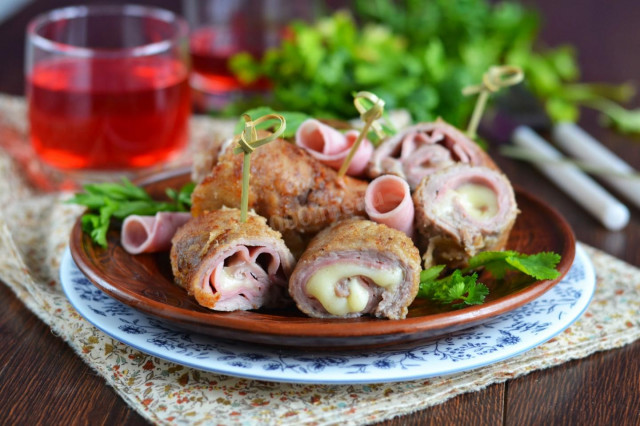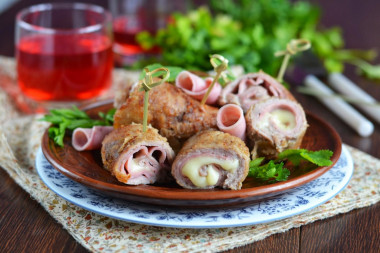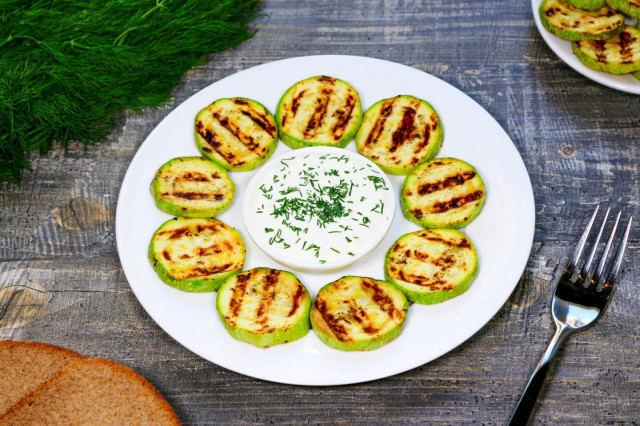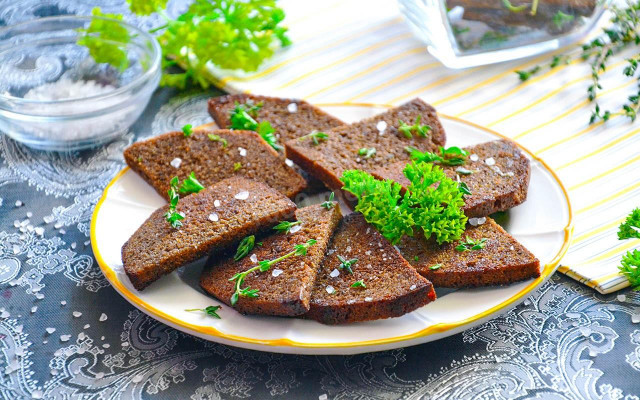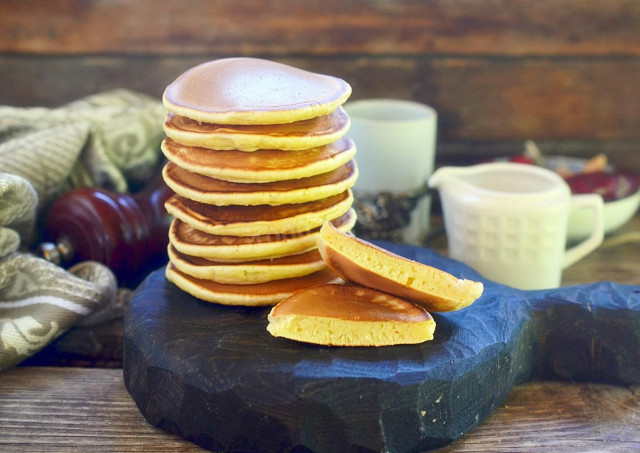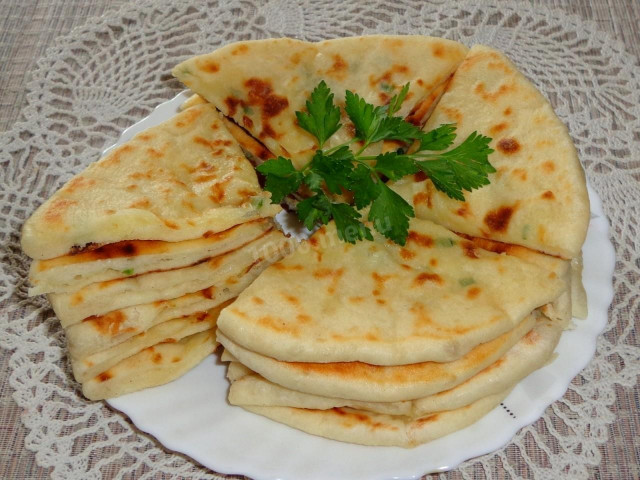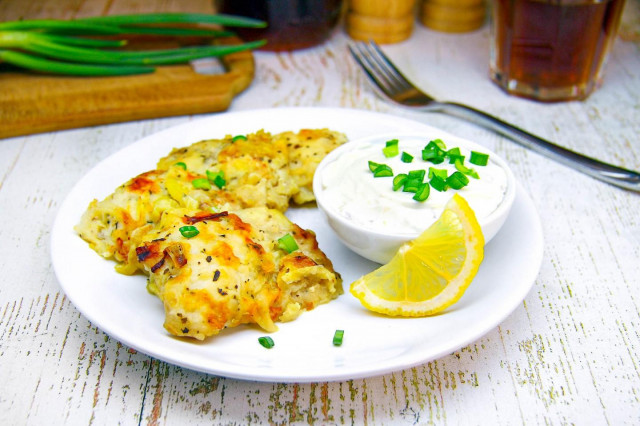Composition / ingredients
Step-by-step cooking
Step 1:
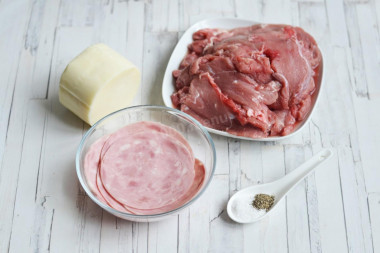
How to make cordon bleu classic with ham and cheese? We will need: 600 g of veal or beef pulp; 100 g of ham; 80 g of cheese; ground black pepper and salt to taste.
Step 2:
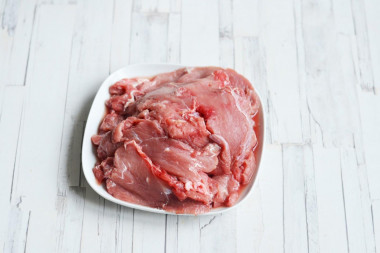
Cut beef into plates no more than 1 cm thick .
Step 3:
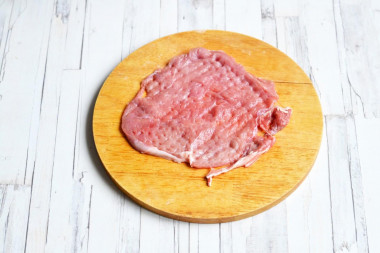
Put a plastic wrap or cellophane bag on the meat and beat it off with a hammer so that the slice becomes thin. Beat off only on one side, so as not to damage the integrity of the meat piece. After all, then the melted cheese will flow through it.
Step 4:
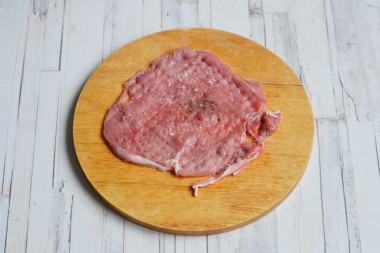
Season the meat with salt and pepper.
Step 5:
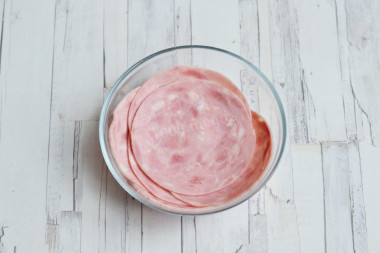
Also cut the ham into thin slices.
Step 6:

Cut the cheese into thin slices.
Step 7:

Put 1-2 slices of ham on a slice of beef. Spread 1-2 slices of cheese on top.
Step 8:
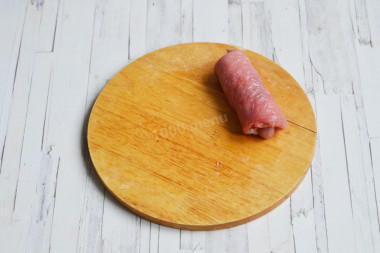
Roll the meat into a tight roll, turning up the side edges so that the cheese does not leak out.
Step 9:

For breading we will need: 100 g breadcrumbs; 1 egg; 4 tbsp milk.
Step 10:
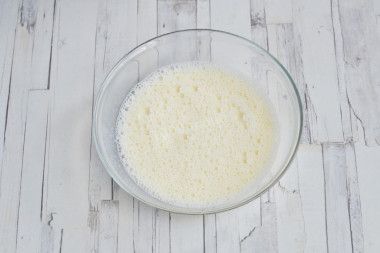
Combine the egg with the milk and whisk until smooth. Pour the breadcrumbs onto a flat plate.
Step 11:

Dip the rolls in the beaten egg.
Step 12:
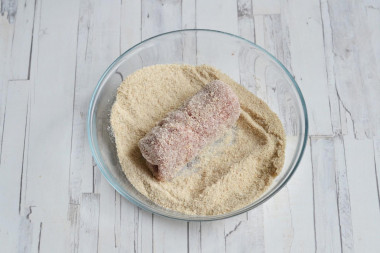
Then roll thoroughly in breadcrumbs.
Step 13:
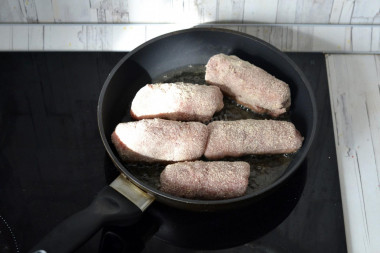
Heat vegetable oil in a frying pan and fry cordon bleu on all sides until golden brown.
Step 14:
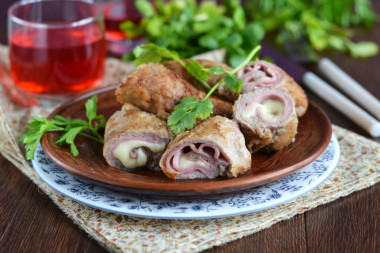
Serve cordon bleu hot. Bon appetit!
The dish, after which the world's most prestigious culinary school is named (located in France, the trendsetter of gastronomic fashion), has many fans around the world. In direct literal translation, "cordon blue" translates as "blue ribbon", which has little to do with the ingredients that make up the dish.
Moreover, the very history of the origin of such a name has been lost and several versions are put forward at once: from the award of the Order of St. Louis on a blue ribbon for it, to the assumption that schnitzel was previously tied with a blue ribbon when served on the table.
And nevertheless, it is under this name that a simple veal roll stuffed with cheese and ham, conquered the whole world. It is noteworthy that initially cordon bleu was made from veal or beef schnitzel, which was beaten off as thinly as possible. However, now beef is often replaced with chicken: this way it turns out to be more budget-friendly.
Important! An incorrectly selected frying pan can ruin even the best recipe. All the details on how to choose the perfect frying pan for different dishes read here .
Any oils are useful only until a certain temperature is reached - the point of smoking, at which the oil begins to burn and toxic substances, including carcinogens, are formed in it. How to determine the roasting temperature and choose the best oil for frying, and which is better not to use at all, read here .
Any cheese is suitable for this dish — hard, semi-hard, soft, like mozzarella. The main thing is that it is delicious, high-quality, without milk fat substitutes and melts well.
Caloric content of the products possible in the composition of the dish
- Whole cow's milk - 68 kcal/100g
- Milk 3.5% fat content - 64 kcal/100g
- Milk 3.2% fat content - 60 kcal/100g
- Milk 1.5% fat content - 47 kcal/100g
- Concentrated milk 7.5% fat content - 140 kcal/100g
- Milk 2.5% fat content - 54 kcal/100g
- Chicken egg - 157 kcal/100g
- Egg white - 45 kcal/100g
- Egg powder - 542 kcal/100g
- Egg yolk - 352 kcal/100g
- Ostrich egg - 118 kcal/100g
- Veal - brisket - 213 kcal/100g
- Veal fillet - 158 kcal/100g
- Veal leg - 161 kcal/100g
- Veal - ham - 108 kcal/100g
- Veal - chop on a bone - 188 kcal/100g
- Veal - schnitzel - 162 kcal/100g
- Veal - dorsal part - 210 kcal/100g
- Dutch cheese - 352 kcal/100g
- Swiss cheese - 335 kcal/100g
- Russian cheese - 366 kcal/100g
- Kostroma cheese - 345 kcal/100g
- Yaroslavsky cheese - 361 kcal/100g
- Altai cheese 50% fat content - 356 kcal/100g
- Soviet cheese - 400 kcal/100g
- Cheese "steppe" - 362 kcal/100g
- Cheese "uglichsky" - 347 kcal/100g
- Poshekhonsky cheese - 350 kcal/100g
- Lambert cheese - 377 kcal/100g
- Appnzeller cheese with 50% fat content - 400 kcal/100g
- Chester cheese with 50% fat content - 363 kcal/100g
- Edamer cheese with 40% fat content - 340 kcal/100g
- Cheese with mushrooms of 50% fat content - 395 kcal/100g
- Emmental cheese with 45% fat content - 420 kcal/100g
- Gouda cheese with 45% fat content - 356 kcal/100g
- Aiadeus cheese - 364 kcal/100g
- Dom blanc cheese (semi-hard) - 360 kcal/100g
- Lo spalmino cheese - 61 kcal/100g
- Cheese "etorki" (sheep, hard) - 401 kcal/100g
- White cheese - 100 kcal/100g
- Fat yellow cheese - 260 kcal/100g
- Altai cheese - 355 kcal/100g
- Kaunas cheese - 355 kcal/100g
- Latvian cheese - 316 kcal/100g
- Limburger cheese - 327 kcal/100g
- Lithuanian cheese - 250 kcal/100g
- Lake cheese - 350 kcal/100g
- Gruyere cheese - 396 kcal/100g
- Ground black pepper - 255 kcal/100g
- Ham - 270 kcal/100g
- Beef ham - 133 kcal/100g
- Boiled ham - 282 kcal/100g
- Raw ham - 270 kcal/100g
- Ham sausage - 242 kcal/100g
- Salt - 0 kcal/100g
- Breadcrumbs - 347 kcal/100g

